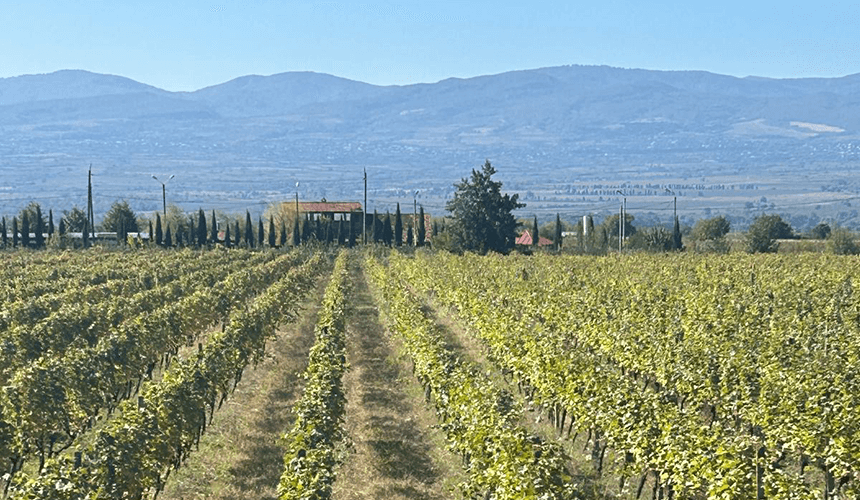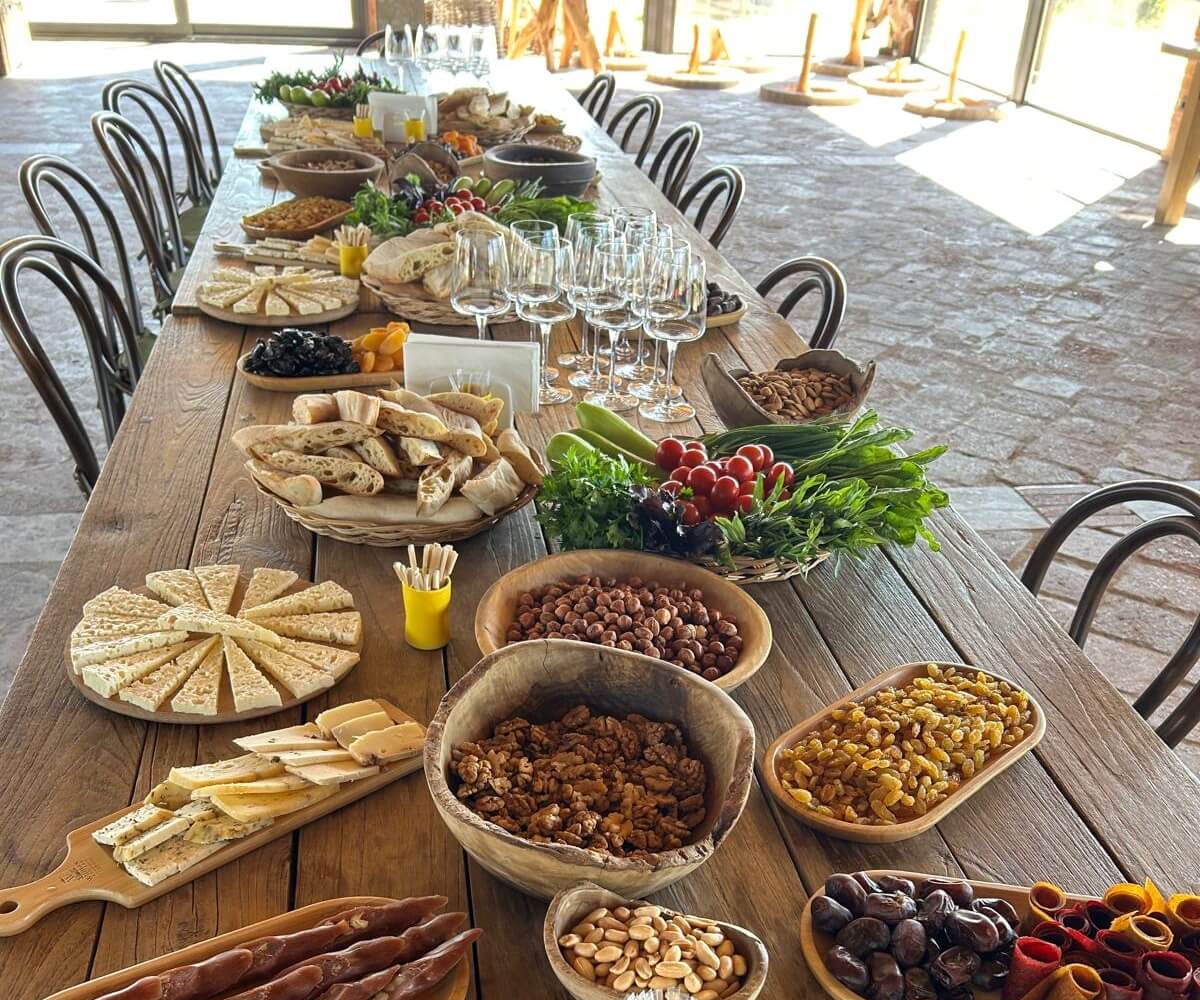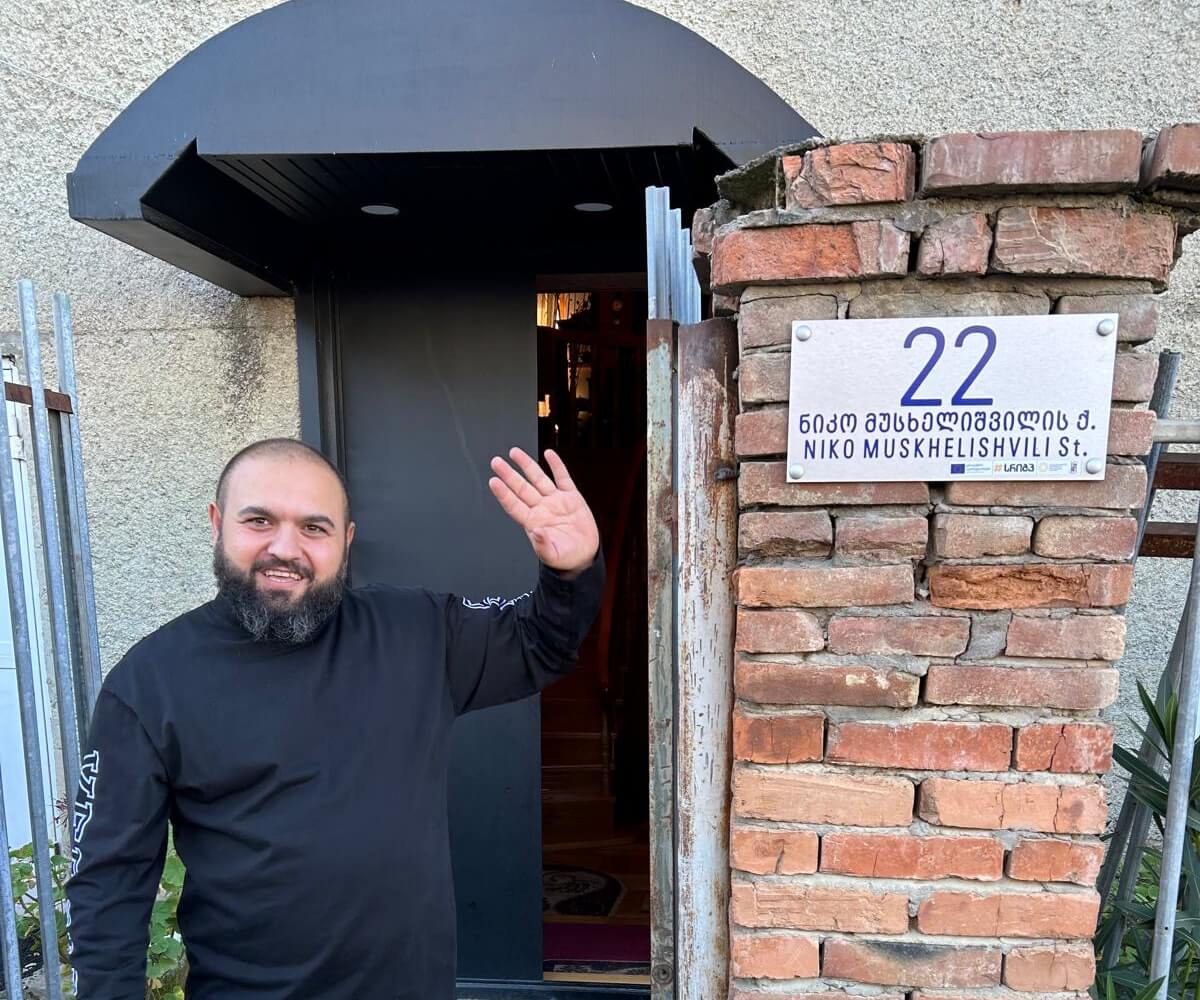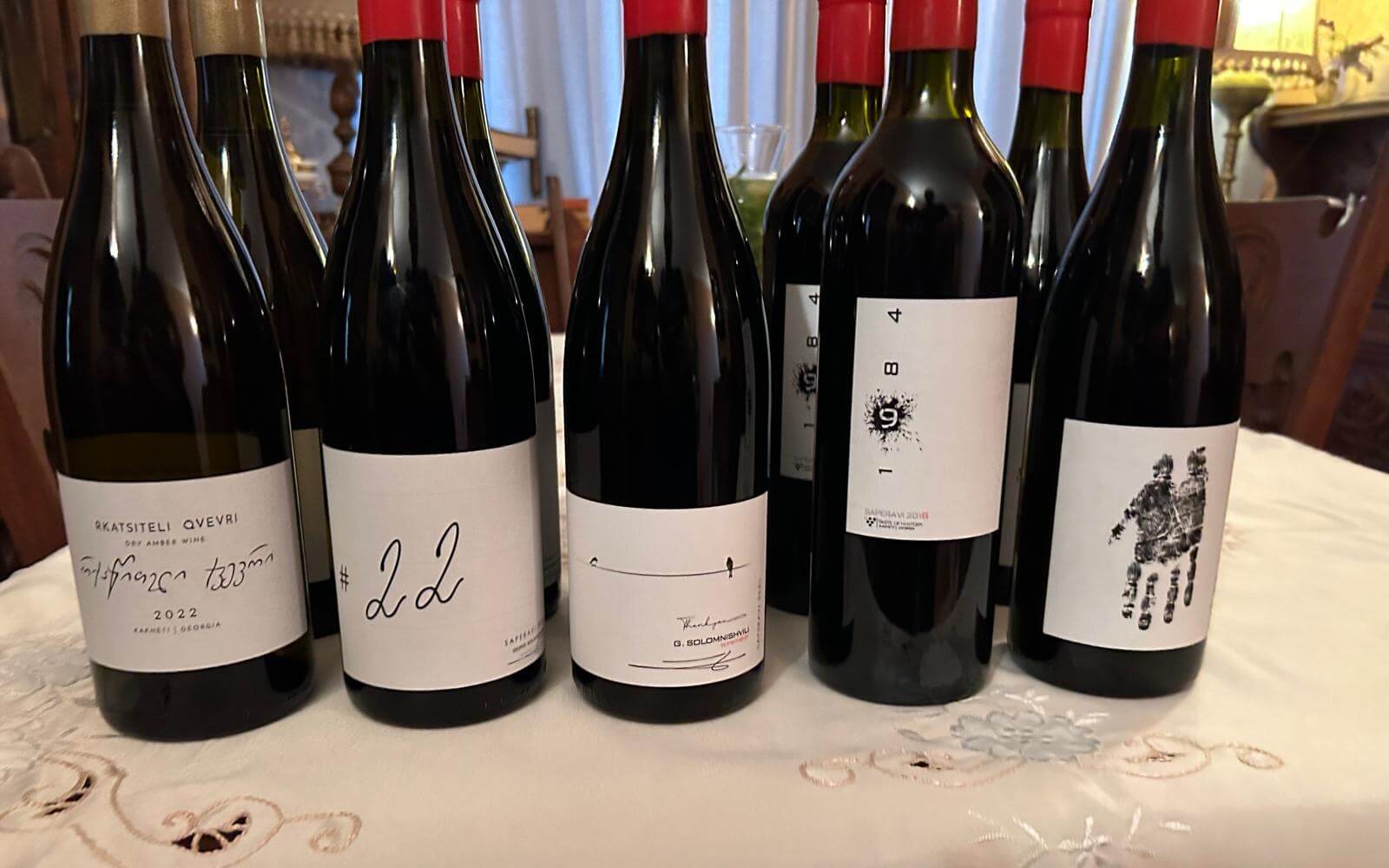Georgia has a winemaking tradition dating back over 8,000 years and so is arguably the oldest wine making country in the word, boasting 44 soil types, over 500 indigenous grape varieties and Qvevri, which are clay vessels used to ferment and age wines. Needless to say, I was very excited to embark on a trip to visit two of the major regions and a host of producers.
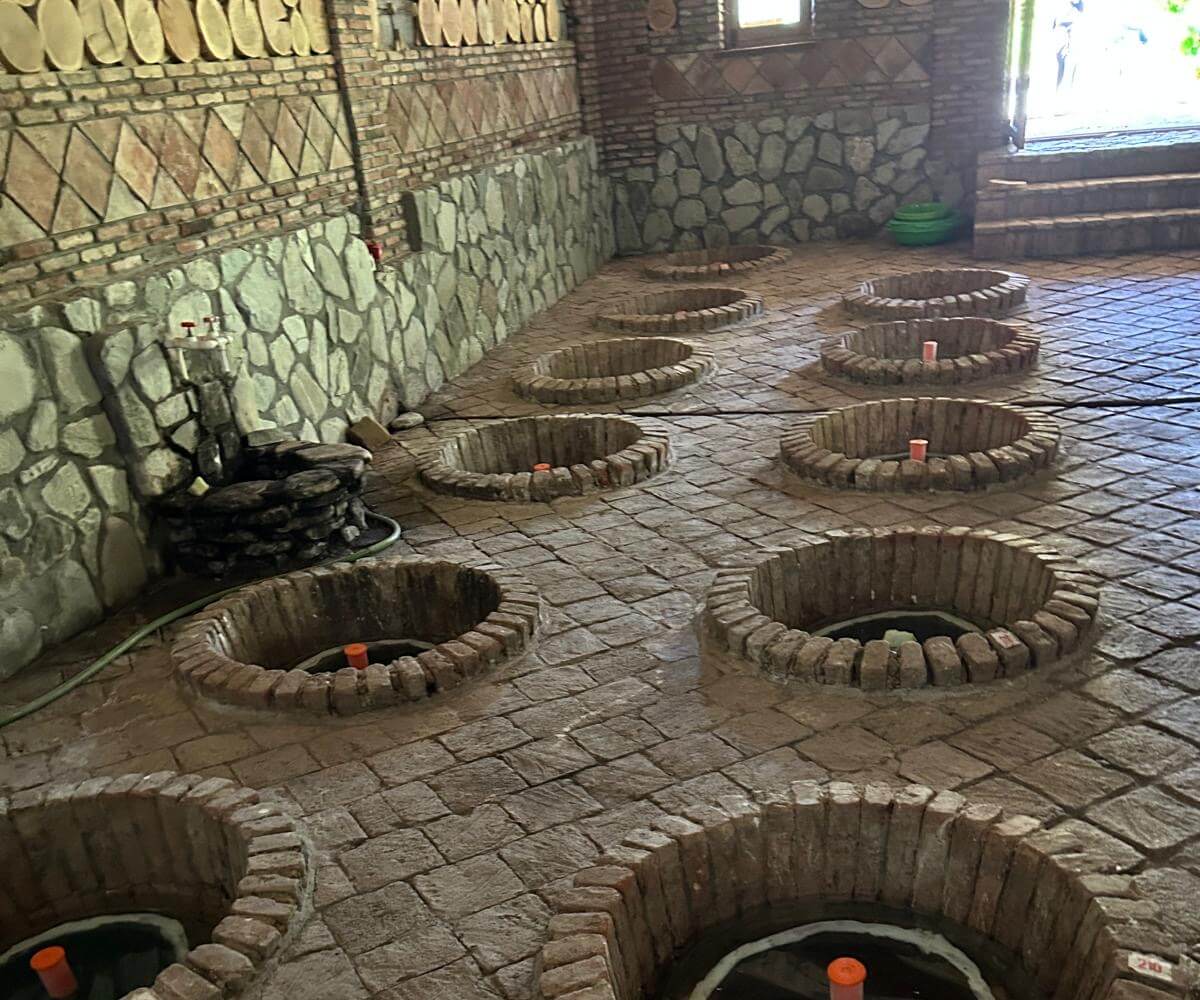
The country has an incredible history – modern era….3.5 million people, and a football team that beat Portugal in the Euros this year.
Sadly, during the Soviet occupation the focus of wine production shifted to volume at the expense of quality. Yields of 15 – 20 tonnes/hectare were demanded, anything less than 15 tonnes/hectare considered a disaster.
My flight from Manchester was on time, very pleasant and included a fairly edible meal. But then came the dreaded 8-hour stop over in Istanbul. Thankfully (and here is my invaluable travel tip if ever you’ve got a lengthy stop in Turkey) I’d spotted that there was a free tour of Istanbul offered by ‘TourIstanbul’. We enjoyed a bus trip into the city, boat ride to see the sights and even a bite of dinner, though sadly no wine. And then bussed back to the airport in plenty of time for the next flight.
We landed at Tbilisi airport at 4am on Monday and were treated(!) to 6-hours of downtime before our first visit and tasting at ‘Wine Factory No. 1’, a very clear nod to the Soviet era. In the 1950’s winery names were dropped in favour of numbers.
After an incredibly informative introduction to Georgian wine and tasting with Sarah Abbot MW and Georgian wine expert, Irakli Cholobargia (Cholo) we were treated to our first Georgian meal.
The food and hospitality set the tone for the rest of the trip - hummus, flatbreads, a cheesy-bread, pomegranate seeds, BBQ’d pork, roasted peppers, mushrooms, tomato salads, cheese, more cheese … the tables literally groaned with food! And it was all delicious. I’d read about the Georgian ‘Supra’ – a feast – and I certainly didn’t leave disappointed.
What followed was an array of producers – big and small, some natural, some organic – many using Qvevri, some with skin contact and a few with oak. And food, lots of it and all incredible, and far more than we could possibly eat. Every tasting was accompanied by food – a new way of tasting for me, and certainly a way to showcase the wines and maximize their enjoyment.
The grapes used in Georgia are mainly indigenous varietals, many with unpronounceable names such as Mtsvane Rachuli, Kisi, Grdzelmtevana and Rkatsiteli (think of your feline friend watching the box – grr – cat – sit – telly!).
Their most famous red is Saperavi, a Tenturier grape (red flesh) and this appears to be incredibly versatile making an array of styles.
The highlight of the trip was without doubt a visit to Giorgi Solomnishvili , a 49-year old making small batch Saperavi. Giorgi is the most captivating winemaker I have ever met. I was honoured to spend nearly 4-hours with him and some of the UK’s top wine writers, listening to his philosophy, vision, stories behind his labels (which he designs) and of course tasting his wines.
I came away feeling I had learnt so much about him, a family man, a spiritual man, delighted to share his quite simply outstanding wines and explain the intricacies of the labels which he himself creates ….a few words from the man himself:
“My inspiration lies in the sun, the rain, wind and clouds above my vineyard, the climate that determines the quality of the harvest, the climate that determines my future actions. Vineyards talk to you, you have to feel it, fall in love with it. My mind is silent when I make wine. I am guided by my inspiration from vineyards, to cellars, to labelling.
Wine is the way I communicate with the world, it’s the way I express my unconditional love. It’s a silent prayer, an unwritten word. It’s an unspoken communication between vision, smell, taste, mind and heart, where there are no more barriers between humans and nature.
Wine is a holy liquid that unites generations in my country, since the beginning of time. It is a symbol for unity and infinity; it is an inseparable part of Georgians in grief and happiness.”
So – what about his wines?
We started with WE 2018 – dense, incredible structure with a richness, ripeness and incredible elegance. It is straight Saperavi, grown on clay soil from 30yo vines with 15% aged in oak. This was a wine with incredible energy and delicious mineral, spice and tobacco character. The label is Georgi’s handprint, but when you look closely, you see two people – Georgi & his wife.
Next up was ‘1984’, a Saperavi Budeshuri (meaning prolonged grapes) also 2018. Black cherry, dark berry and tobacco notes lead to silky smooth tannins and a long, juicy finish. Stunning!
Finally we got to the 2018 vintage of ‘#22’. Flavours of a forest floor and dark notes were balanced with aromas of peonies battered by a thunderstorm.
This is a wine that looks back at the past – 22 is the number of the house he inherited from his father where we tasted; the 22 also depicts the Georgian word for ‘Mama’ which translates as father. Georgi lost his father when he was just 20 and this wine is his way of connecting with him.
This was not one of the most thought provoking and educational wine trips I’ve ever been on. It was without doubt THE most thought provoking and educational wine trip I’ve been on. My final advice, if you get an opportunity, go to Georgia, and regardless – drink Georgian wine!
David Archibald
Sales Director
 Back to blog
Back to blog


